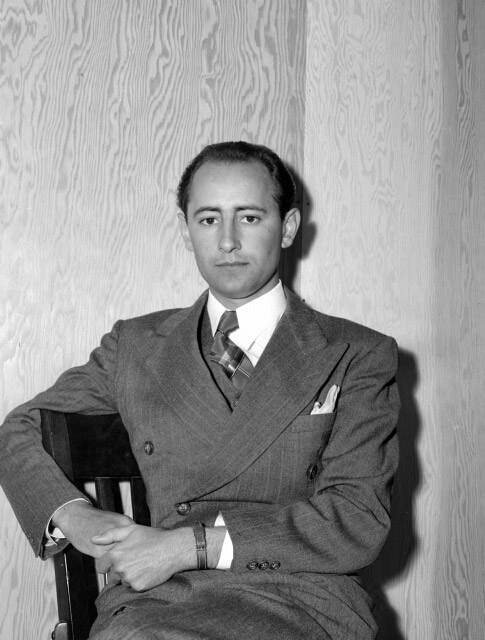Frank Joseph Malina was born in Brenham, Texas on October 2, 1912, the son of Czech immigrants. From 1920 to 1925, the family returned to Czechoslovakia, but in the interests of acquiring the best possible education for Frank, who was already showing signs of exceptional intelligence, they returned to the United States. A graduate of Brenham High School, Malina earned a Bachelor of Science degree from Texas A&M University in 1934, then received a scholarship for Graduate Studies at the California Institute of Technology (Caltech). In two more years, he earned Master of Science degrees in Mechanical Engineering and Aeronautical Engineering, both from Caltech. In 1940, Malina received a Ph.D. in Aeronautics, also from Caltech.
Theodore von Karmán was a noted rocket pioneer in the early twentieth century and an authority on aerodynamics. While Dr. von Karmán was a professor of aeronautics at Caltech in the 1930s, Frank Malina was one of his graduate students. As early as 1933, Malina dreamed of interplanetary travel. In 1936, he and von Karmán co-founded the GALCIT Rocket Research Project, which focused on rocket propulsion. Malina’s work in this project was later the basis for the first U.S. jet-propelled guided missile. In 1939, Malina won the French Prix d’Astronautique. In 1940, he and von Karmán identified the possibility of constant-thrust long-duration solid-fuel rocket motors.
In 1942, Dr. von Karmán and Malina established a laboratory devoted to rocket work at Caltech. As the word “rockets” had a dubious connotation to many in the United States at the time, Malina and von Karmán referred to their work as “jet propulsion” and their lab was called the Jet Propulsion Laboratory (JPL). Today JPL is part of NASA, specializing in the exploration of the solar system beyond Earth.
Beginning in 1943, Frank Malina conceived and directed the design, construction, and testing of America’s first successful high altitude sounding rocket, the WAC Corporal. The WAC in the rocket’s name means “Without Attitude Control”. The WAC Corporal was also the United States’ first operational guided ballistic missile.
The WAC Corporal was first launched on September 16, 1945, from White Sands Missile Range, New Mexico. It flew 75 miles and reached an altitude of 30 miles at a velocity of Mach 3. The Corporal was little more than an artillery round launched vertically and guided in part of its flight by radar. Prior to launch, the radar at the launch site established the target and a beam-rider guidance system was activated and set the missile’s ballistic trajectory. Minor course corrections could also be made by radar.
The WAC Corporal was used overseas at U.S. bases in West Germany, Italy, and the United Kingdom from 1946 until 1966. It could be equipped with either a conventional or atomic warhead and was suitable for tactical missions, beyond the range of conventional artillery and was the first weapon fitted with a kiloton warhead.
In the late 1940s, Malina and his JPL team also invented spontaneously igniting liquid propellants for rocket engines and improved rocket propulsion for flying boats. Malina, however, had grown disillusioned with the role of technology in warfare and hoped to use science for the betterment of mankind in the postwar world. In 1947, he joined UNESCO, the United Nations Educational, Scientific and Cultural Organization and until 1953, worked on various projects in international cooperation. In 1953, Malina left UNESCO to pursue a career in the arts. In 1967, he founded Leonardo, an art magazine, and acted as editor until 1968.
Dr. Frank J. Malina remained active in the art world and helped to produce Leonardo until his death on November 9, 1981, at his home in Boulogne Sur Seine, a suburb of Paris.

